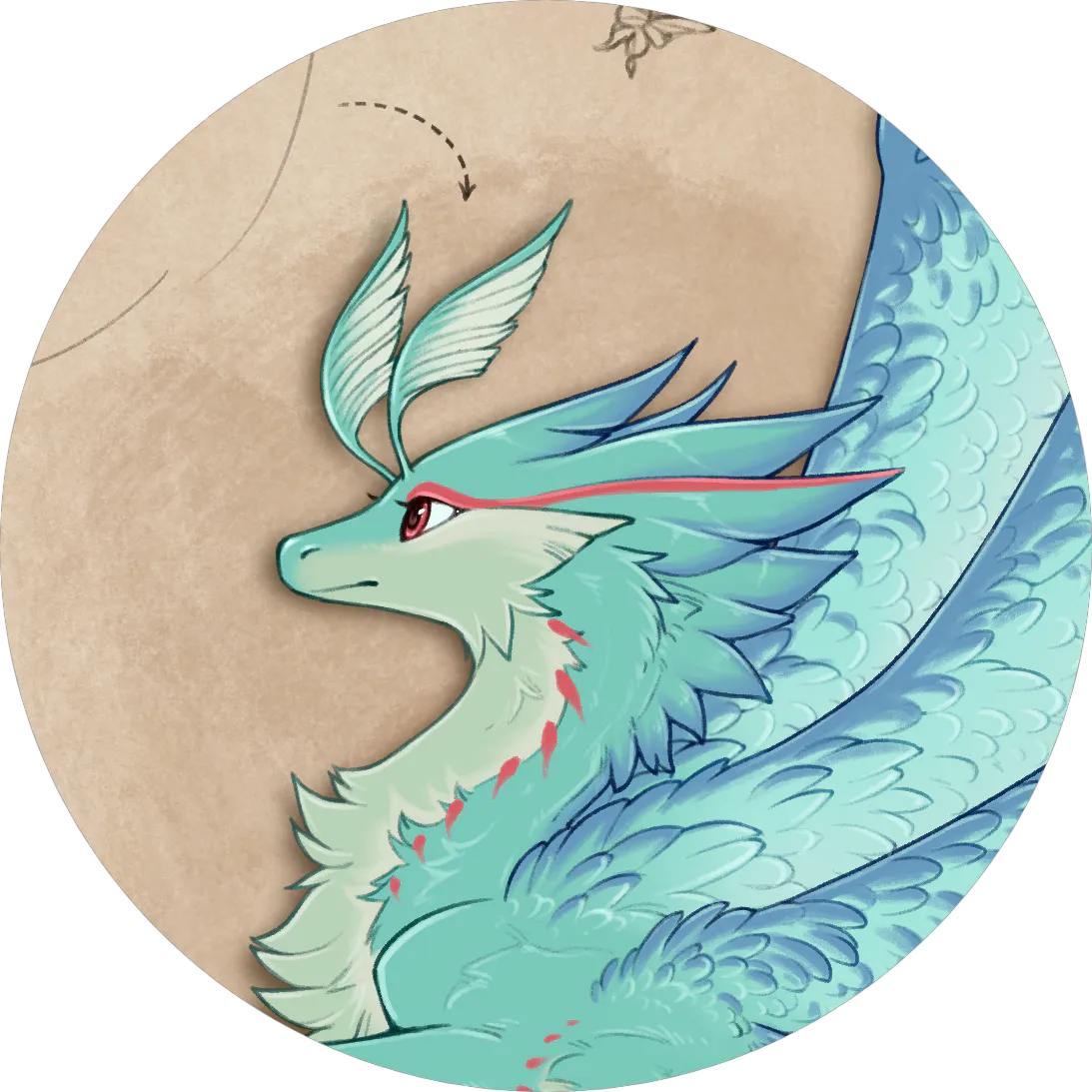This is Ulysias species. This species is heavily WiP so expect changes. 1st draft
Description
This specie is a heavily furred hexapodal with 4 wings with 2 antennae.
Build
The chest consists of 8 shoulders in total (4 forelegs and 4 wings). Wings are separated into 2 pairs with 1st pair being bigger and 2nd is usually tiny bit smaller. There are 2 tail fins at the end of the long muscular tail. The dragon can close or open them depending on need. Wings are formed into plates past the halfway mark to allow for better folding or manipulation. The head contains a needle-like proboscis inside of the maw, hiding under the tongue, and there are 2 antennae on top. This specie doesn’t have ears or earholes and hears exclusively through the antennae. Claws are serrated on the inside to allow to cut any and all silks that the dragon is able to make.
Chitin or keratin?
Most of the body is chitin based, rather than keratin. Wings are a combination of chitin and unknown material to make them durable and resilient while also remaining bendable. A chitin fur covers them. Most of the fur on the body is combination with chitin overcoat and keratin undercoat. Claws are made of keratin-chitin-unknown material combination.
Abilities
This specie has several handy abilities.
Proboscis
The proboscis is used for both feeding (by drinking blood) and for injections. The body is able to synthesize most chemicals regardless of complexity. Only limitation is the veins that carry the solution as any strong acid or base, that’s strong than stomach acid or base equivalent, will melt through.
Silk
All 6 wrists of the dragon can generate silk. These silks can come in wide range of types. Some are used for building and are strong and sometimes sticky. Some are used for lighter things and are stretchy instead. There are also trigger and affected types which work together to create silks, that upon contact light up or disintegrate. As this specie came from silkwings (from Wings of Fire), they also posses the ability to generate fire silk and other similar types. They can also create the counter, ice silk, which works on similar bases to copper pipes and endothermic reaction.
Thermal control and Fur
The fur of this specie allows to either work as an insulator or as a heat transfer, allowing the dragon to either keep their body warmth or radiate it outwards, while also being able to choose parts of their coat to be the heat sinks (taking heat in) and radiators (pushing heat out). They can also change from fur to scales by combining strands of chitin together to form scales.
Antennae
Antennae are one of the most sensitive parts of the body. They detect both pressure changes and electromagnetic radiation, allowing them to both hear and communicate with devices albeit very limited due to the complexity of modern communication protocols. It does allow them to hear analog radios as well as communicate with other of their species. They can also use their antennae as a pretty detailed radar.
Flight
Wings are build to support 2 flight modes, the standard and the alternating. The standard is the normal dragon flight, flapping. The alternating flight is based on the flight of a humming bird or a moth. This means the pairs oscillate up and down, pushing the dragon forward, while moving offset cycles (when 1st pair goes down, the 2nd goes up and vice versa). The alternating flight is much faster, allowing the dragon to breach speed of sound. Do note that the oscillation happens very quickly, up to hundred cycles per second if not more.
Reproduction
This specie reproduces via eggs. The female can manipulate not only her dna but also the dna carried by the sperm of a male to make healthy, diverse descendants. She can also hold them for later but they will expire after few weeks. Both males and females have slits hiding their respective sex organs. Males have internal testes. Sexual organs develop after the 2nd cocoon phase.
Feeding
This specie has two food sources, blood and omnivore food sources.
Stages of life
Out of the egg
A dragonet already is able to walk, begin to learn flight and feed itself. The primary food source is blood while omnivore food source is secondary and usually ignored entirely. The dragonet is lacking most of the abilities, only able to generate small amount of silk and of a single type. Its also lacking the sensitivity of their antennae and so their hearing is worse. Thermal control or changing of their fur to scales is fully missing.
1st cocoon
Around the teen years, the dragonet enters a cocoon for the duration of 3 months. In this phase, the dragonets body undergoes several changes. Upon emerging they posses most of their adult abilities and their primary food source changes from blood to omnivore food sources.
2nd cocoon and adulthood
Around the 18 year mark, the teen dragon enters the second cocoon for another 3 months. This finalizes some changes and the dragon develops sexual organs. Upon emerging, the dragon gains all abilities previously missing or incomplete. From this point onward, the dragon is considered adult biologically but socially they become adult after they turn 18, if they emerged from the cocoon before, or after they emerge from the cocoon if they enter it after turning 18.
